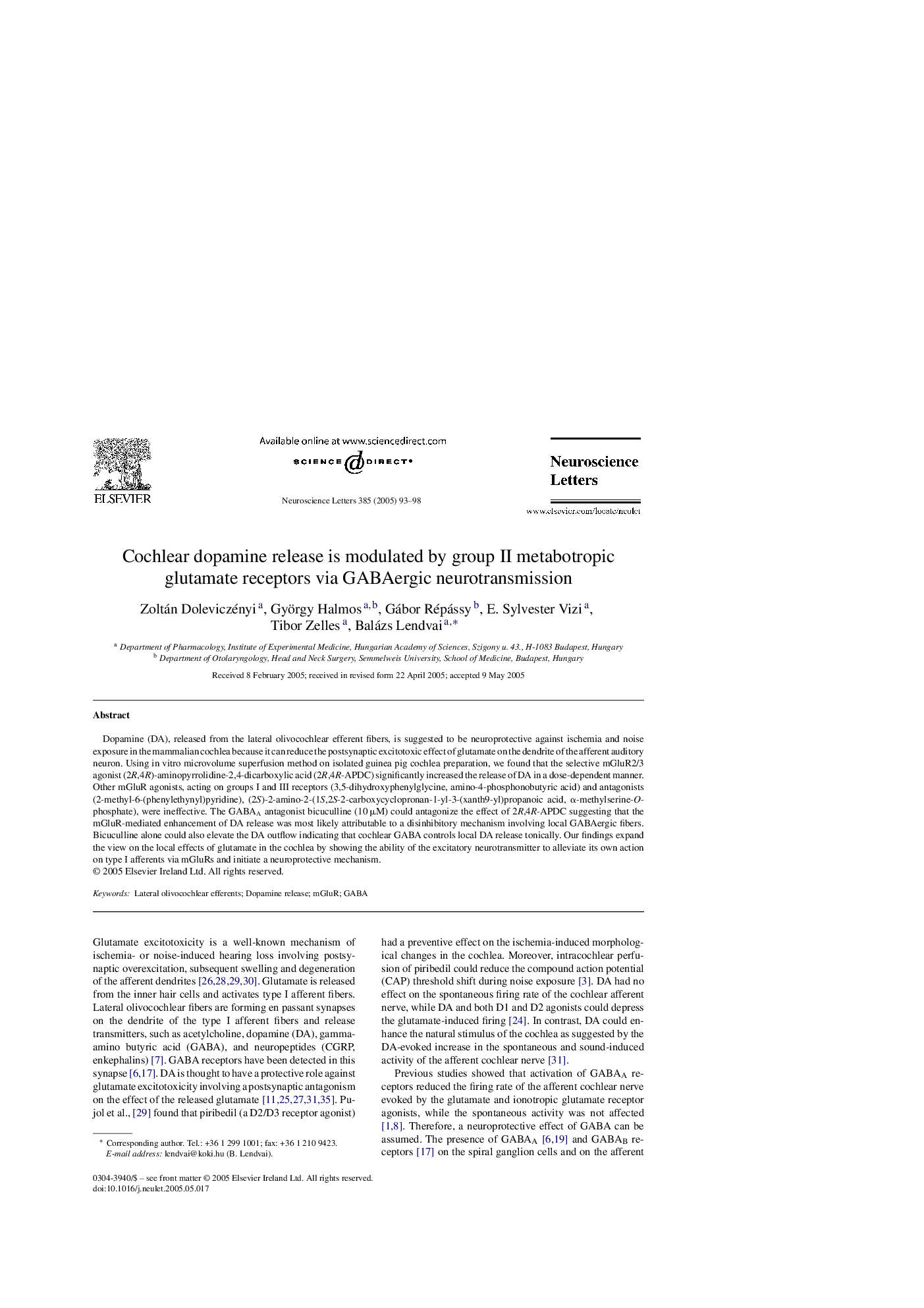| Article ID | Journal | Published Year | Pages | File Type |
|---|---|---|---|---|
| 9428899 | Neuroscience Letters | 2005 | 6 Pages |
Abstract
Dopamine (DA), released from the lateral olivocochlear efferent fibers, is suggested to be neuroprotective against ischemia and noise exposure in the mammalian cochlea because it can reduce the postsynaptic excitotoxic effect of glutamate on the dendrite of the afferent auditory neuron. Using in vitro microvolume superfusion method on isolated guinea pig cochlea preparation, we found that the selective mGluR2/3 agonist (2R,4R)-aminopyrrolidine-2,4-dicarboxylic acid (2R,4R-APDC) significantly increased the release of DA in a dose-dependent manner. Other mGluR agonists, acting on groups I and III receptors (3,5-dihydroxyphenylglycine, amino-4-phosphonobutyric acid) and antagonists (2-methyl-6-(phenylethynyl)pyridine), (2S)-2-amino-2-(1S,2S-2-carboxycyclopronan-1-yl-3-(xanth9-yl)propanoic acid, α-methylserine-O-phosphate), were ineffective. The GABAA antagonist bicuculline (10 μM) could antagonize the effect of 2R,4R-APDC suggesting that the mGluR-mediated enhancement of DA release was most likely attributable to a disinhibitory mechanism involving local GABAergic fibers. Bicuculline alone could also elevate the DA outflow indicating that cochlear GABA controls local DA release tonically. Our findings expand the view on the local effects of glutamate in the cochlea by showing the ability of the excitatory neurotransmitter to alleviate its own action on type I afferents via mGluRs and initiate a neuroprotective mechanism.
Related Topics
Life Sciences
Neuroscience
Neuroscience (General)
Authors
Zoltán Doleviczényi, György Halmos, Gábor Répássy, E. Sylvester Vizi, Tibor Zelles, Balázs Lendvai,
